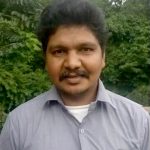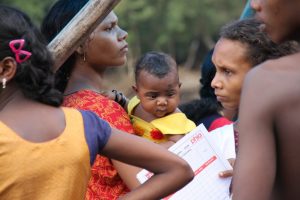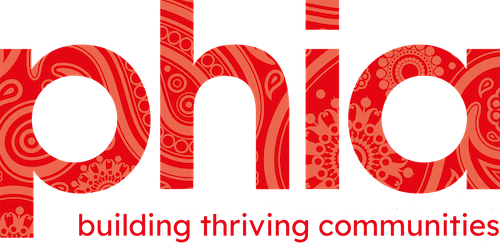 His name is Balan. He is the ‘Ooru Moopan’ (chieftain) of Cholanayakkar community. His father usedto be the Ooru Mooppan and after his death Balan took over. In South Asia, Cholanayakkans are the only human population who continue to live in caves. Various anthropological studies have established the Cholanayakkans as the most ancient and vulnerable population in South East Asia. Currently, there are a total of 62 families who live in the Nedumkayam forest region of Kerala. The literacy rate among this tribe is just 5%.
His name is Balan. He is the ‘Ooru Moopan’ (chieftain) of Cholanayakkar community. His father usedto be the Ooru Mooppan and after his death Balan took over. In South Asia, Cholanayakkans are the only human population who continue to live in caves. Various anthropological studies have established the Cholanayakkans as the most ancient and vulnerable population in South East Asia. Currently, there are a total of 62 families who live in the Nedumkayam forest region of Kerala. The literacy rate among this tribe is just 5%.
During the 2019 floods, the Nedumkayam area had 28 landslides; out of which 11 were in Cholanayakkans inhabited areas. Only because of the traditional knowledge the people in of this community possess, the tribe managed to narrowly escape the disaster. Connected and deeply harmonized with the land, they were able to recognize the changes taking place in the texture of the soil, which signaled a high probability of a landslide. As a result, all of them had moved to safer spots in the forest. However, in the process, they lost all their belongings. Government Officials were informed of this development, but they didn’t receive any major support from the officials. Balan assumes this may be a result of the, comparatively lesser media coverage, combined with strict safety restrictions that prohibit the general public from accessing these parts of the forest. (Restrictions are in place due to the presence of fringe elements in this region) The Cholanayakkans have not received anything more than rice from the Scheduled Tribes Development Department. Balan mentioned, ‘PHIA is the first and only [organization so far] to have reached out to us!’
Why is Balan’s story worth sharing? What is so unique about his story?
While, the premise of any humanitarian response needs to be rooted in the values of humanity, neutrality, impartiality, and independence; countries such as India present a unique challenge. The subcontinent is plagued with systemic inequality, structural violence and exclusion, behaviours deeply rooted across regions and communities. The chances of reaching excluded, vulnerable, and marginalized communities in a disaster-affected area are quite low! In most cases these communities are part of the most fragile eco-systems, flood prone areas or at the epicenter of a drought-hit region.
So, when there are communities who are already at a point of disadvantage before a disaster strikes, their degree of resilience and capacity for recovery is even more compromised post-disaster. For them the recovery curve is extremely steep! Hence, it is crucial to be even more sensitive and aware of this information and design inclusive responses.
Inclusive programming takes cognizance of the ethno-socio-political realities in the area of intervention and is sensitive to the needs of the communities. This means making concentrated efforts from design to implementation in order to reach the unreached and leave no one behind. Such a framework is critical if we want to reach more communities such as Balan’s.
The last decade has seen a visible increase in erratic climate extremities across the globe. A record 7 million people have been displaced globally due to natural disasters including storms, droughts and floods between January and June 2019! A report by the Intergovernmental Panel on Climate Change (IPCC) in 2018 warned us of the disastrous consequences if the current trends of global warming are not reversed immediately. Needless to say, these trends will affect the disadvantaged and vulnerable populations disproportionately causing higher degrees of food insecurity, food prices, income loss, lost livelihood opportunities, health insecurity, and population displacement.
As a nation, India will be severely affected, given its sizeable population, higher levels of inequality and multidimensional poverty. In 2019, Cyclone Fani (April 2019) triggered approximately 2 million new displacements in life-saving evacuations. Following which, we witnessed one of the harshest summers with 46.11% of the country experiencing ‘abnormally dry’ to ‘exceptionally dry’ conditions. On the other hand, over 2.5 crore people across Assam, Odisha, Bihar, Kerala, Maharashtra, Karnataka and Gujarat were affected by floods during July and August.
With the rapid increase in the frequency and scale of disasters the development and humanitarian spaces is constantly under a high-pressure flux. Funding is limited and the resources available are disproportionately less as compared to the scale of the disaster. Given this, how does one respond? It is times like these when inclusive programming becomes even more critical, vital and non-negotiable.
In order to implement effective and efficient inclusive programming, one needs to imbibe the essence and spirit of inclusion in each phase, from conception to design, to planning, implementing and finally post-delivery monitoring and evaluation.
The usual questions that are asked in our sector are; what is the extent of the damage? what is the loss to human life? the damage to property? the status of shelter and drinking water in different areas? While these are important question to ask, what we should also be asking is; who are the historically excluded communities in the affected region? Who are the most marginalized, landless, vulnerable and socially excluded populations in this region? Who are the communities with the least capacity to cope post the disaster?
These questions offer an ethical guide in narrowing down the geography and the target population. This should then be followed up with an on-ground intensive baseline survey. A baseline designed to capture all the vital information and indicators that will help guide and identify the worst affected and most marginalized families in the area.
It is always advisable to work in partnership with the local community and youth groups. Their understanding of their home, the topography and the local dynamics are invaluable to designing a program which takes into account the terrain and vulnerability analysis. After multiple data sets are gathered, the target community rights holders list should be finalized based on the survey, community meetings and consultations with local leaders.
During the distribution phase, it is critical to have a feedback mechanism in place. It is ideal to set up ‘help desks’ at distribution sites for beneficiaries to provide feedback and grievances. Helpline numbers can also be used to ensure effective communication between beneficiaries and the implementing team. Once the distribution is completed, a Post Distribution Monitoring survey (within 2-3 weeks of the completion of distribution) is necessary (with a min 10% outreach of the overall beneficiary count) to understand the utility and relevance of the response. This completes the feedback loop for learning and documentation.
In 2019, PHIA responded to the floods in the states of Bihar and Kerala. In Bihar, our response was focused on the Madhubani district (targeting the Musahar community). Of the total outreach, 97.5% of our beneficiaries were from the Musahahar community and the remaining were from Dom community. In Kerala we responded in the Malappuram district (targeting the Adivasi community). 95% of our total beneficiaries were tribals/Adivasi and 5% were Dalits. All the above-mentioned processes were followed which allowed us to deliver a quality-inclusive response on the ground.

Reaching marginalized communities and working with them is never easy. But, as humanitarian professionals living up to the commitment of ‘Leaving no one behind’ and ‘Reaching the unreached’, was never meant to be easy.
In the end, one of the key reflection points is – As professional aid agencies, each time we hit the ground, are we open to add the lens of inclusion to see people who are often invisible, mostly forgotten and frequently overlooked… and start our response at the end of line instead of the beginning?
